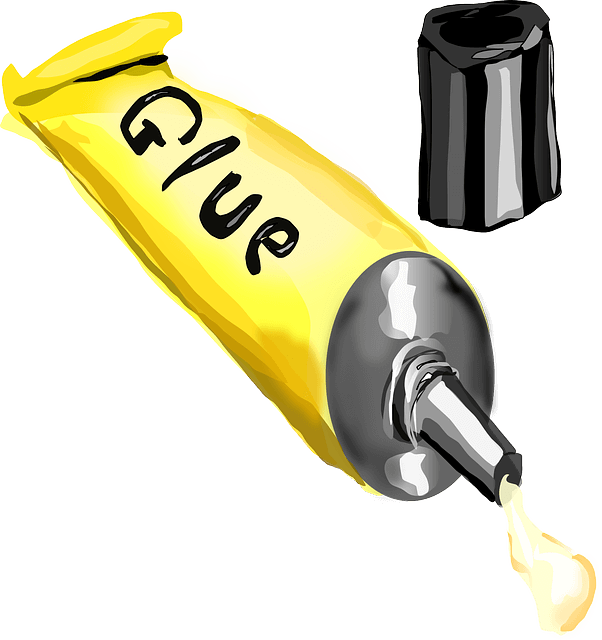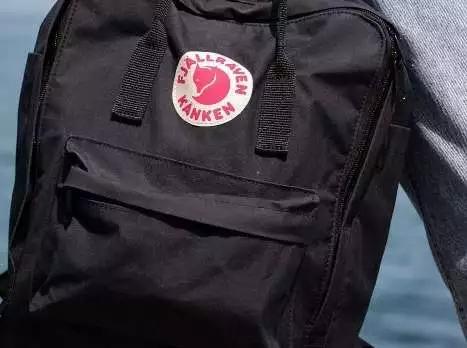When going about your chores, your clothes might tear. If you are close to your house, that would not be a big deal – you can easily change your clothes and repair them at a future date or even take them to your local tailor. However, if you are away from your house, the first thing to your mind is what you can use to join the torn parts together. As you consider your options, you are likely to ask yourself, can I use superglue on my clothing?
Even though super glue can work on fabric, you shouldn’t use super glue on the fabric. From a chemistry perspective, super glue polymerizes when applied to most fabric fibers. Thus, when you use super glue on a fabric, which will ruin your clothes will be produced. Also, when superglue cures, it becomes hard and makes clothes uncomfortable.
This article discusses superglue in detail as it purposes to answer different questions about superglue and whether it can be used on fabrics. Moreover, some of the alternatives you should consider instead of using super glue are highlighted in this article.
What Is Super Glue?
Super glue is known worldwide due to its unmatched ability to form a strong bond with nearly any material. Scientifically and from an industrial perspective, super glue is known as cyanoacrylate glue. Cyanoacrylate glue defines swift-bonding superglues that can be applied on almost anything, be it metal, human hair, human skin, fabrics, or even plastics.
Super glue is made from cyanoacrylate, an acrylic resin with the admirable feature of curing immediately. For super glue to cure swiftly, hydroxyl ions found in water are needed. Since these ions are readily available in the air, super glue can cure after being applied to a surface swiftly.
Super glue goes through a process known as anionic polymerization. In this process, heat is produced. For that reason, when a huge amount of super glue is applied on any surface, such as fabric or even skin, the super glue can end up causing burns.
When you apply super glue on dry surfaces, you are likely to find that super glue will not be effective in joining the two surfaces. In such cases, spray water on the two surfaces, and super glue will work. By spraying water on the two surfaces, you ensure that hydroxyl ions needed to cure super glue quickly are present.
When using super glue, you need to be careful since super glue does not differentiate between human hands and the surfaces you want to join. If you are not careful, you will find that even before the super glue has attached the two items you wish to be bound, your fingers will be joined first since human skin has the right amount of hydroxyl ions needed to cure super glue.
Can You Use Super Glue On Fabric?
Practically, super glue can work on fabrics. However, it is recommended that you don’t use it on clothes. This is because most fabrics are absorbent and lack a hard surface that super glue works well in, as you might know. Moreover, after applying super glue on fabrics and washing the fabrics, you will have a super glue patch on your fabric. As the patch is hard, your fabric appearance and drape will be affected. Thus, super glue should not be used on fabrics.
Another reason why super glue should not be used on fabrics is that during the curing process, super glue produces heat; in many cases, this heat ends up burning the surface. Thus, when used in fabrics, there is a high chance that super glue will burn the fabric.
Imagine your fabric is made up of an expensive fabric such as silk or linen, and you end up ruining the fabric by using super glue bought for less than five dollars. It would help if you refrained from using super glue on your fabrics. If you have to fix your fabrics with glue, you should use fabric glue.
To a great extent, Fabric glue is similar to super glue, with the only difference being that fabric glue is specifically manufactured to be used on fabrics. Therefore, when fabric glue is used on fabrics, it does not leave any stains. However, just like super glue, fabric glue is not a permanent solution to joining two fabrics since, when washed, it is unable to hold the fabrics together most of the time.
How To Apply Super Glue On Fabric?
Even though I have made it clear that I would not use super glue on fabric, there are situations where you might have no option apart from using super glue on your garment. If that is the case, below is how you should apply super glue to the fabric.
Apply small amounts of super glue on the fabric.
Since super glue needs hydroxyl ions, spray small amount of water on the fabric.
Do not apply super glue on sections of the clothing that involve a lot of movement since if you do, the super glue will be detached once disturbed.
To ensure that your fabric does not burn, use tiny amounts of super glue.
Once the fabric has served its purpose, you should wash the super glue off the fabric.
Use super glue on the fabric as a temporary fix.
Does Super glue Work On Fabric?
Even if super glue is not meant for fabrics, super glue can be used on garments when there is no other option. Indeed, when you apply super glue on fabrics, note that adhesion can’t last long since the moment super glue on your fabric is disturbed, the bonding will be broken.
When using super glue on fabric, you need to be careful since if you apply excessive amounts of superglue, your fabric will be damaged by the heat produced as the super glue joins the fabrics. In addition, an excessive amount of super glue will make your cloth have a stiff patch. As a result, the clothes can be uncomfortable to wear.
Due to the risks of burning your clothes and having super glue stains on the fabric, you should only use super glue as the last option.
Why Does Super Glue Get Hot On Fabric?
If you attentively watch what happens to the fabric after applying super glue, you will notice that the section of the fabric where you have used super glue produces some smoke. So you could even wonder whether super glue is smoking in fabric.
Once super glue has been applied to a fabric, energy in the form of heat is released. It is for that reason that you will see smoke on the fabric.
If you apply high amounts of super glue on highly flammable fabrics such as wool and cotton, the energy released can make the fabric catch fire. For that reason, you shouldn’t use superglue on fabrics unless you have no option.
Super Glue Reaction With Different Fabrics
Even if you should never use super glue on fabrics, there are times when you might not have another option apart from using super glue on the fabric. It is essential to know that different fabrics react differently to super glue at such times. Let’s now look at how super glue reacts with other materials.
Super Glue On Nylon
Even if super glue will work on nylon fabric, the fix is not permanent as it will soon detach once the fabric is disturbed. Other adhesives are ideal to be used on nylon fabrics. Only use super glue on nylon if you do not have another option.
Super Glue On Cotton
When you put super glue on cotton, a swift chemical reaction occurs. In this chemical reaction, a lot of heat is released, resulting in the cotton fabric burning up. Thus, you should only use super glue on cotton in emergency situations where you need to light a fire, and you do not have anything else apart from super glue and a piece of cotton fabric.
Super Glue On Leather
Super glue can be used to fix small sections on your leather garment. However, you need to be extra careful since you could damage other sections of your leather that come into contact with super glue.
When super glue is applied to leather, leather will become stiff and inflexible. On the other hand, if you apply a lot of superglue, your leather garment will become inelastic and unbending. Thus, only use superglue in situations where you have no other option.
Super Glue On Wool
When you apply super glue on wool, you will get a reaction similar to using super glue on cotton.
When super glue is applied to wool, a hasty chemical reaction occurs. In this reaction, a lot of heat is released. The heat released can cause burns to the wool fabric.
Thus, you should never super glue on wool unless you want to light up the fire.
Super Glue On Polyester
You should never use super glue on polyester fabrics. When you apply super glue on polyester fabrics, you will ruin the fabric. This is because the polyester fibers in the fabric cannot absorb the super glue. Thus, a large stain will be formed on the polyester fabric.
Moreover, the solid patch of the super glue will make your polyester fabric inflexible, thus creating a weak point for the fabric. The lifetime of your polyester fabric will therefore be shortened once you use super glue on the fabric.
How To Get Super Glue Out Of Jeans
When using super glue, you need to be careful that it does not stick to your clothing. However, despite being careful, you might find that you have some super glue on your jeans. This is common and should thus not be a concern.
If you follow the correct procedures, you can remove super glue from your jeans. However, you mustn’t put your jeans in the dryer if it has super glue stains. If you put jeans with superglue on a dryer, the super glue stain will be hardened by the heat in the dryer, making it almost impossible to remove super glue from the jeans.
Here is the process you should use to remove super glue from jeans.
What You Will Require
Paper towel
Acetone nail polish remover
Toothbrush
Sandpaper – fine grit
Laundry soap
Washing Machine
Dryer
Step 1: Let super glue dry
Once your jeans have super glue, you should not try to remove super
glue on the jeans before it dries. Instead, leave the super glue on your jeans for some time so that it dries. If you attempt to remove super glue before it dries, you will make it spread to other sections of your jeans and have more trouble on hand.
Step 2: Apply acetone nail polish remover on a paper towel
Once you have confirmed that super glue on your jeans is dry, take a paper towel and make it wet with acetone nail polish remover. To make sure that the fabric of your jeans will not be ruined by the nail polish remover, lightly rub the damp paper towel with acetone on a small section of your jeans.
Step 3: Use the wet paper towel to rub on the top of the superglue stain on your jeans
Once you have confirmed that acetone will not affect the fabric of your jeans, rub the top of the superglue stain with a paper towel damp with acetone. After rubbing, place the paper towel on top of the stain. Cover the stain with a wet paper towel for about two minutes.
Step 4: Using the toothbrush, scour off the super glue from the jeans
Take the toothbrush and gently scour super glue from the jeans. If your stain is not coming off, you might have to apply more acetone nail polish and keep scouring until the super glue on your jeans starts to peel off. Scour off the super glue until there is no super glue on your jeans.
Step 5: Turn your jeans inside out
Turn your jeans inside out and find out whether super glue stain has progressed to the inside of your jeans. If you find super glue stains on the inside of your jeans, repeat steps 2 to step 4.
Step 6: If Super glue stain is still on your jeans, use the sandpaper
Gently rub the super glue off your jean’s fabric using the sandpaper. Make sure that you moderately rub the superglue with sandpaper to don’t ruin your fabric.
Step 7: Apply laundry soap on the spot where there was super glue
Apply three drops of laundry soap to the area where you had the super glue stain on your jeans. Using your fingers or palm, gently rub the laundry soap on the spot with the super glue stain.
Step 8: Wash the jeans in a washing machine
Wash your pair of jeans in a washing machine according to the instructions specified on the care label.
Step 9: Inspect the jeans and make sure that the super glue stain is removed.
After the wash cycle is over, before putting your jeans in the dryer, inspect the super glue stain spot and confirm that the super glue stain has been completely removed. Never put the jeans in the dryer if you still have the stain. Instead, you should repeat the above steps.
Step 10: Put the jeans in the dryer
Once you have confirmed that the super glue stain has been removed from your jeans’ clothing, you can put your jeans in the dryer and dry them according to the care label guidelines.
Conclusions
You will inevitably have super glue on your clothes. Whether intentional or not, you will want to remove super glue on your clothes as early as possible.
Always take care when working with super glue and avoid your clothes coming into contact with the super glue. Then, when you happen to have cotton or wool clothing in emergencies, you can use super glue to light up the fire.
Superglue should never be used if you don’t want to sew your clothes and want to join two fabrics. Some of the alternatives to sewing include hot glue, fusible tape, and fabric glue. You should never use super glue on fabrics unless you have no option.







